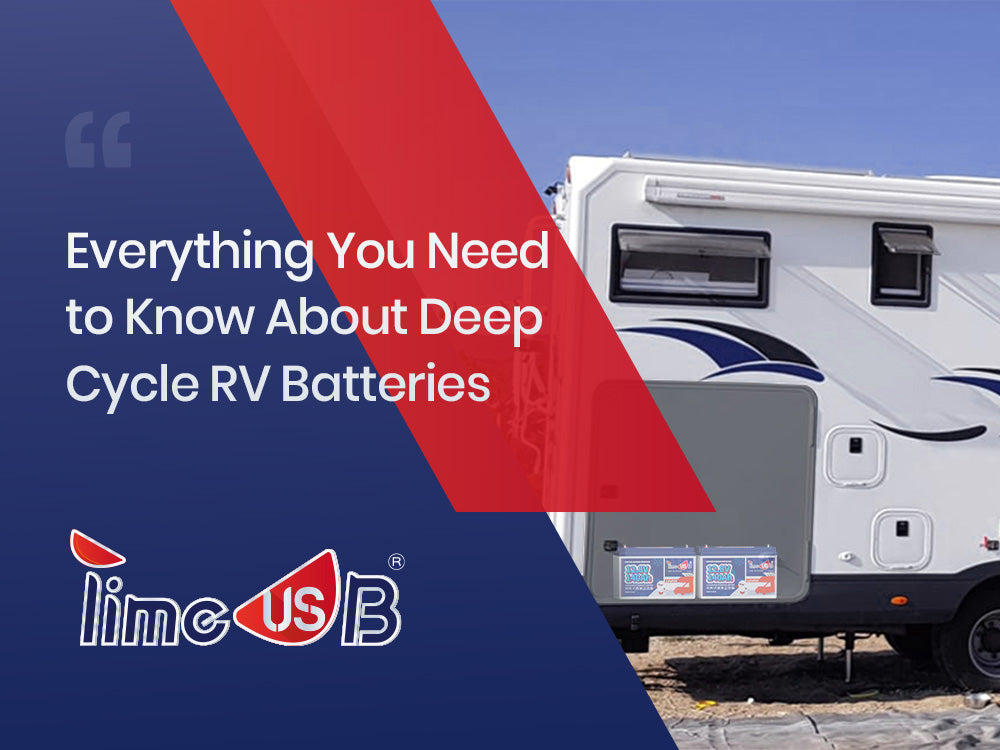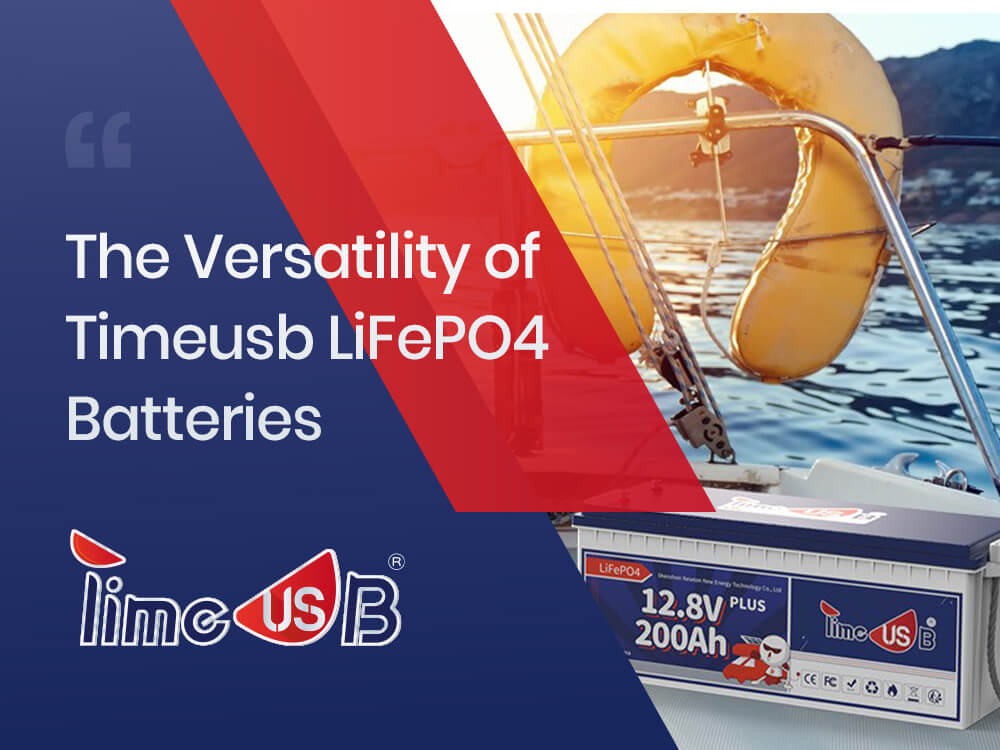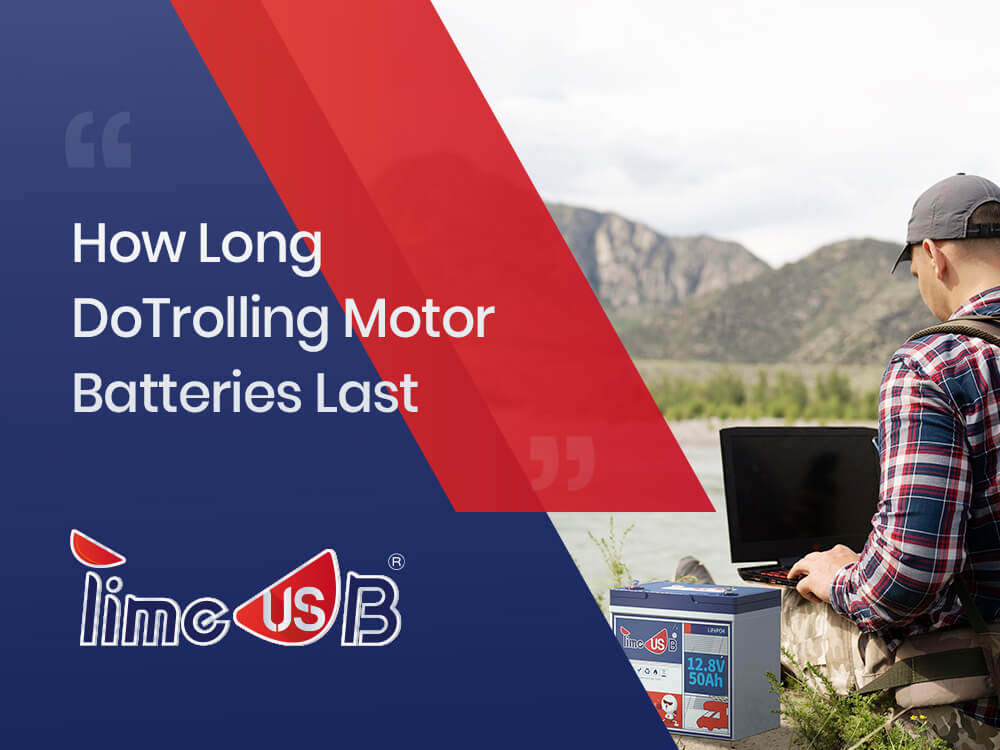[Newest] Everything You Need to Know About Deep Cycle RV Batteries

Deep Cycle RV Batteries are a crucial component of any recreational vehicle. These batteries provide the necessary power to run lights, appliances, and other electronics while you're on the road or camping. However, not all deep cycle batteries are created equal. Choosing the right one for your RV can be overwhelming with so many options available in the market.
In this article, we will explore everything you need to know about Deep Cycle RV Batteries. We'll cover the different types of deep cycle batteries, their features, and the factors to consider when choosing the best one for your RV. With our comprehensive guide, you'll be able to make an informed decision and ensure that your RV is powered smoothly throughout your adventures.
Why LiFePO4 Batteries are the Best Lithium Chemistry for RV
Lithium iron phosphate (LFP) batteries are a popular choice for RV owners, and for good reason. Compared to other lithium-ion chemistries like lithium cobalt oxide (LCO), nickel manganese cobalt (NMC), and nickel manganese aluminum (NMA), LFP batteries offer several benefits that make them ideal for use in an RV battery bank.
Firstly, LFP batteries have a longer lifespan than other lithium-ion chemistries. This is because they have a lower rate of capacity loss, which means they can be discharged and charged more times without losing capacity. This feature is particularly useful in an RV where the batteries may be frequently discharged and charged.
Secondly, LFP batteries are safer than other lithium-ion chemistries due to their chemical composition. LFP batteries use iron phosphate as the cathode material, which is less flammable and less likely to cause thermal runaway. This condition, where a battery overheats and catches fire, is a significant risk in RVs where flammable materials are present. The safety aspect of LFP batteries is therefore a significant advantage worth considering.
Thirdly, LFP batteries have a higher discharge rate than other lithium-ion chemistries. With a high discharge rate, LFP batteries can provide more power for a given amount of time. This feature is crucial in applications like running an RV's electrical system, where high discharge rates are required.
Lastly, LFP batteries are more environmentally friendly than other lithium-ion chemistries. They use iron phosphate, which is a more abundant and less toxic material than the cobalt or nickel used in other lithium-ion chemistries. This makes LFP batteries a more sustainable option for powering an RV.

Timeusb 12V 100Ah Pro LiFePO4 Lithium battery, Drop-In Replacement for Group 31 batteries--Born for RV life
Timeusb 12V 100Ah Group 24 LiFePO4 Deep Cycle Battery
While LFP batteries offer many advantages, it's important to note that traditional deep-cycle RV batteries are still widely used and have their own set of benefits.
Types of Deep Cycle RV Batteries
These types of batteries, such as flooded lead-acid, AGM, or gel batteries, have been used for decades in RVs and are known to be durable and reliable.
Flooded lead-acid batteries
A flooded lead-acid battery consists of lead plates or grids submerged in a liquid electrolyte, typically concentrated sulfuric acid. The negative plates are lead-antimony while the positive plates are lead dioxide when fully charged. As the battery discharges, both types of plates become lead sulfate and the electrolyte turns into water, losing much of its sulfuric acid.
Overcharging the battery with a high voltage leads to electrolysis, decomposing the water into hydrogen and oxygen gas, commonly known as "off-gassing." An equalization charge is sometimes used to restore inadequately charged flooded lead-acid batteries to a properly functioning state. Regular charging typically involves multiple stages, including a bulk charge, an absorption or "topping" charge, and a float charge to maintain full charge. Despite regular charging, some off-gassing still occurs, necessitating regular top-ups with distilled water. Failure to maintain adequate electrolyte levels can expose the plates, causing irreversible damage.
Undercharging leads to temporary inadequate charging, while prolonged undercharging can cause acid stratification, resulting in a layer of denser electrolyte and layers of diluted electrolyte. Flooded lead-acid batteries have been used for a long time due to their affordability, wide availability, versatility, and familiarity. However, they are not ideal for RV battery banks and require specific installation guidelines, including placement in an accessible battery box, regular watering, and proper ventilation to avoid poisonous gas build-up.
Gel (Sealed Lead-Acid)
The Gel-cell batteries were designed as a solution to overcome the issues associated with flooded batteries. The gel electrolyte in these batteries eliminates the possibility of spills, allows for flexible mounting orientations, and ensures that they are sealed and safe to use in low-ventilation environments since they do not emit gases. Although small gel cells are prevalent in power wheelchairs and electric scooters, their drawbacks include a slower charging rate and lower energy density compared to AGM batteries, making them less efficient. As a result, we do not offer Gel-cell batteries.
AGM (Sealed Lead-Acid)
AGM batteries are a popular type of sealed lead-acid battery, invented in the 1970s and widely used in RVs. Unlike flooded lead-acid batteries, AGM batteries have fiberglass mats that absorb all the liquid electrolyte, making them spill-free. AGM batteries have several advantages, including the ability to charge much faster than flooded batteries (up to five times the rate), deep-cycle down to a depth-of-discharge of 80%, low self-discharge, and resistance to sulfation. In addition, they do not produce off-gassing under normal conditions, and most do not require an equalization charge except for Lifeline AGM batteries. AGM batteries can be installed safely inside RVs, although we recommend placing them in a battery box.
Lithium-Ion
Lithium-ion batteries differ significantly from lead-acid batteries, whether sealed or flooded. These batteries use lithium ions that move between the cathode and anode, typically in a solution of lithium salts. Lithium batteries can come in various sizes and shapes, such as large or small cylinders, soft plastic pouch cells, or plastic rectangular prismatic cells. They are available in many chemistries, with one of the safest and most stable options being the lithium iron phosphate battery, which has a slightly lower energy density than other types but is less prone to thermal runaway, has a flat discharge curve, and typically has the longest lifespan if properly maintained with good charging practices and moderate temperatures. These batteries do not produce off-gassing, and they can be discharged almost completely without long-term damage. Additionally, they are lighter and smaller than flooded lead-acid batteries and can accept high charge rates, such as 100A for a 100Ah battery, making them ideal for RV use.
Best Practices for Maintaining Your Deep Cycle RV Battery
Always keep your battery fully charged
To extend the service life of your Deep Cycle battery, it is recommended to keep it fully charged at a voltage of 12.5 volts or above when not in use. Allowing the battery to remain partially discharged or completely flat for extended periods can cause irreversible internal damage, significantly reducing its overall lifespan.
It's essential to periodically check the battery voltage using a voltmeter and ensure that it remains above 12.5 volts. After returning from a trip, make sure to recharge the battery fully to maintain its optimal performance. Additionally, it's advisable to re-check the battery voltage at least once a month to verify that it remains within the recommended range.
Keep the battery and connections in good condition
To maintain optimal performance of your Deep Cycle battery, it's crucial to keep the top surface clean, dry, and free of dirt and grime. A dirty battery may discharge faster due to electrical current traveling across the grime on top of the casing. Check the battery case regularly for any obvious signs of physical damage or warpage, as this indicates overheating or overcharging.
For maintainable batteries with removable caps, check the electrolyte level to ensure that the water covers the battery plates fully. When topping up, only use distilled or demineralised water to avoid damaging the battery.
Periodically inspect the battery and clean the top surface as required. Check the terminals, screws, clamps, and cables for any damage or loose connections. If you have a maintainable battery, verify the electrolyte level and add distilled or demineralised water if necessary. You can optionally apply a thin coating of high-temperature grease to the terminals to reduce corrosion build-up.
FAQs about Deep-Cycle Battery
1. Can I connect different batteries together?
No. To ensure proper battery performance, it's essential to connect batteries of the same type, model, and capacity, and that are the same age. It's also important to keep them in the same location and use identically-sized wiring (both in gauge and length) to the charging source.
However, an exception to this rule is that you can connect your camper van engine starter battery to the house battery bank using a battery isolator, combiner, or charging relay. This will allow the house bank to be charged through the alternator or solar, while simultaneously charging the engine battery.
2. Why has my battery gone flat?
A battery can go flat for several reasons, including leaving it partially or fully discharged for extended periods, which can cause permanent damage and reduce its lifespan. Human error, such as leaving lights or accessories on, can also drain the battery. Additionally, parasitic drain from components that draw standby power can gradually wear down the battery over time.
Age is another factor - older batteries are less efficient at holding a charge. On average, lead-acid batteries last around 42 months, so if the battery is beyond this age, it's recommended to replace it.
If you have recently experienced a flat battery, it's crucial to have your battery retailer investigate whether any issues exist with the vehicle's charging system before fitting a new battery.
Conclusion
In conclusion, a deep cycle RV battery is a crucial component of your RV setup, and choosing the right battery and maintaining it correctly are essential to maximizing its lifespan and performance. By following the tips outlined above, you can keep your deep cycle RV battery in top condition and enjoy its benefits for years to come. If you're still unsure which battery to choose or how to maintain it, consult with a professional RV expert or battery technician. With proper care and upgrading, your deep cycle RV battery can provide reliable and efficient power for your adventures on the road!


![[Full Guide] The Comprehensive Guide to LiFePO4 Battery Life](http://www.timeusbpower.com/cdn/shop/articles/The_Comprehensive_Guide_to_LiFePO4_Battery_Life_757d2749-9468-4739-ac83-0960c27749b0.jpg?v=1722918256&width=1080)
